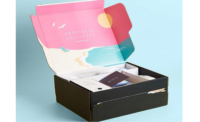The Five S’s of Food Packaging

Worldwide, the consumer packaging market is valued at $400 billion, and $500 billion if industrial end-markets are included. As such, the health of the sector is linked to that of the total world economy. Here, Antony Debus, head of U.K. sales at Advanta, discusses the challenges for today’s food manufacturing market and the five S’s to consider when choosing packaging: sustainability, shelf-life, size, shape and smart labels.
Rule One: Sustainability
Throwaway culture is becoming a thing of the past. According to Mintel’s "Global Packaging Trends 2018" report, 36 percent of Australians prefer products that are sold in eco-friendly packaging — a trend that is mirrored around the world. From the U.S.-based WasteZero to Britain’s Zero Waste Week, there are a number of consumer schemes and directives to reduce waste from excessive packaging.
Brands like Coca-Cola are already taking steps to improve the sustainability of their packaging. In 2017, the company announced that it would increase the amount of recycled plastic in its bottles to 50 percent by 2022. However, not all food producers have been as quick to react to the public’s demand for eco-friendly designs.
Currently, there are over 400 Extended Producer Responsibility (EPR) directives in operation in the European Union. EPRs are financial incentives for manufacturers to reduce the waste created by their products. Essentially, the scheme means that manufacturers are responsible for their product's packaging, even when it becomes waste. However, statistics by Zero Waste Europe, show that only 45 per cent of product and packaging waste in the EU is covered by an EPR scheme.
These initiatives, both governmental and consumer, give hope that we can begin to reduce excessive waste from food packaging. However, to satisfy the growing demand from consumers, food producers will begin to request more eco-friendly packaging from their suppliers.
Rule Two: Shelf-life
Increasing efforts to improve the recyclability of food packaging goes hand-in-hand with concerns about food wastage around the world. According to a study by the Food and Agriculture Association of the United Nations, roughly one third of the food produced globally goes to waste every year— that’s approximately 1.3 billion tonnes.
However, with stringent regulations for communicating the shelf-life of food on packaging, it can be difficult for manufacturers to strike a balance of ensuring perishable products are protected from the elements, while also encouraging consumers to reduce the amount of food they waste.
Vacuum sealed packaging is known for extending the shelf life of any fresh products by removing the air that surrounds food to inhibit the growth of bacteria. As a result, choosing vacuum sealing as part of food packaging can extend the refrigerated lifespan of a product by three to five times.
What’s more, some types of gas-flushed vacuum sealing can also prevent the product from discoloring. For example, Modified Atmosphere Packaging (MAP) can use carbon monoxide within the package, which preserves the red color of certain meats. In turn, this lessens the likelihood of a consumer throwing the meat away due to discoloration.
Food packaging designers can’t avoid the legislation and regulation surrounding the shelf-life of food products. However, there are ways for manufacturers to extend the shelf-life of their food products simply by adjusting the style of packaging they use.
Rule Three: Size
For consumers, there’s nothing more frustrating than wasting food simply because the packaged portion is too large. Today’s convenience culture means that most consumers don’t have time to repackage food, or freeze it to reheat at a later date. Therefore, food manufacturers need to opt for packaging that fits the required size — whether that’s for small ready meals or for larger products.
One of the common challenges faced by food manufacturers is that some food packaging materials, particularly aluminium foil trays, will become weak when used for larger or heavier foods. For example, using the same strength aluminium trays to package a light-weight ready meal will not retain its strength if used to house something more substantial, like a full rack of ribs.
Consumers often associate the standard of food packaging with the quality and taste of the food itself. For example, if the aluminium tray that houses a rack of ribs begins to bend or split when the consumer places it in the oven, it’s likely that the entire product will be discredited as substandard — regardless of how good the food tastes.
You don’t want the taste of your product to be discredited due to poor quality packaging, so it is vital for manufacturers to opt for packaging that suits the size and weight of the product it will house.
Rule Four: Shape
The shape of food packaging can often be disregarded as an insignificant decision for food manufacturers. However, packaging shape can have an impact on the taste of the food — particularly if the food remains in the packaging while it is being cooked.
Oven bake aluminium trays, for instance, are often used as a convenience for consumers by allowing them to place meals in the oven directly from the fridge without the fuss of decanting the food onto a separate baking tray. But, how do manufacturers ensure the packaging will retain the intended taste of the product?
Advanta’s team of packaging designers tackled this issue for a manufacturer of sausages. Taking a basic aluminium tray, the team used metal ridges to create a shape that looked like a grill inside the tray. This design ensured that the sausages were cooked in their intended method. By balancing the sausages on the grill, any fats and greases fell from the meat and were caught by the tray packaging. By ensuring the meat is placed on a grill and isn’t sitting in its own grease, the consumer can then achieve the same crisp texture as a traditional grill-cooked sausage.
Ultimately, the intention of food packaging should be to preserve the product and ensure it retains its intended taste, from the production line, right through to the consumer's plate. But, as consumers become more informed about their food, how should manufacturers incorporate product information onto their packaging?
Rule Five: Smart labels
Consumers want frustration-free shopping. They don’t want to be bombarded with questionable health claims or adjective-filled drivel about the product itself. Instead, manufacturers should communicate the important stuff on their packaging, like use-by dates, ingredients and dietary information. Thankfully, technology will soon make this process simpler with the introduction of smart labeling.
Last year, researchers at Clarkson University in New York created a paper-based sensor to inform consumers when food is about to expire. The sensor changes color when it encounters spoiled food, with the intensity of the color indicating how badly the food has gone off. The innovation caused a media storm, with suggestions that the technology could significantly cut back on unnecessary food waste.
Until recently, the only successful commercial use of smart packaging has been temperature-sensing labels used for medical vaccines. However, there are now several initiatives to bring this technology to the mass market for food packaging, including a project funded by the European Commission. For now though, food manufacturers should opt for clear, concise packaging to accurately inform consumers of what’s inside their products.
Stringent legislation, evolving consumer demands and the introduction of new technologies are unwrapping new issues for food packaging manufacturers to tackle — alongside the existing challenges of preserving food and accurately communicating product information.
When choosing a food packaging for their products, manufacturers should opt for a supplier that considers the five S’s of food packaging: sustainability, shelf-life, size, shape and smart labels.
Advanta is one of the leading foil food container manufacturers in Europe. The company headquarters in Cannock, United Kingdom, is purpose-built and establishes new standards for the whole packaging industry. The business operates globally and is able to offer regional support in Australia, Asia, South America, Africa and the USA.For more information, visit advantapack.com.
Looking for a reprint of this article?
From high-res PDFs to custom plaques, order your copy today!





